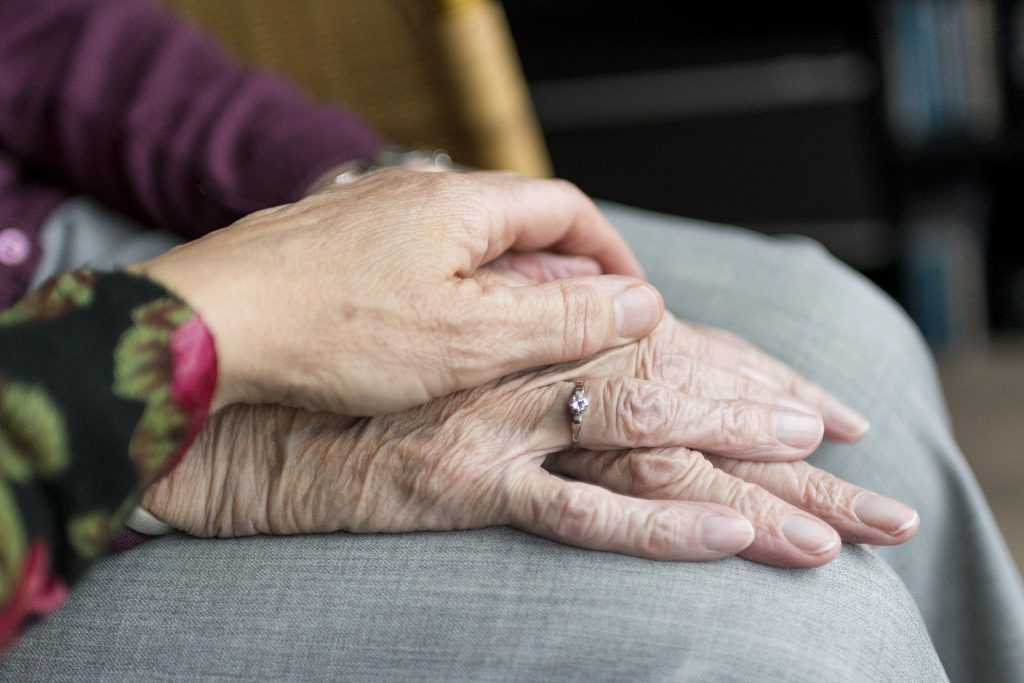
The impetus for this blog post came from reading an article in Pain Medicine – “Care” without Compassion – The Eighth Social Sin? I think it raises important points and questions in regards to providing “care” for those suffering from pain.
As the article points out in today’s world, the word “care” is freely attached to almost anything and everything in healthcare. Because it is a term so easily tossed around, some wonder if providing care has lost some of its meaning in today’s world? In the past, I have used two famous pieces of artwork from just prior to the turn of the 20th century to compare and contrast the biomedical ‘care’ of curing versus the biopsychosocial ‘care’ of healing.

The Agnew Clinic, depicts Dr. Agnew getting ready to perform a partial mastectomy. Biomedical care has made many important advances in healthcare through the centuries that we are all grateful for. The care is precise and skilled and often times cures many alighments. Nevertheless, as the painting shows there can be a bit of impersonalization with this care. One can fall into a trap of in some ways treating the body separate from treating the person. Of course, there is a time and a place for such care, such as having cancer removed from breast tissue to allow for a cure. However, does the care come back full circle to eventually treat the person as well and provide healing?

Contrast that with The Doctor, which shows a Victorian doctor observing the critical stage in a child’s illness.This care is less technical while being much more personal. Yes, it shows the inadequacies of the medical profession because there is no guarantee of a cure. However, it does show the personalization of being willing to be by the patient’s side through the experience as part of the healing process.
In healthcare, there is healing (the process of making or becoming sound again) and curing (relieving a person of the symptoms of a disease or condition). Sometimes we may achieve a cure but healing does not take place. Other times people may heal even though no cure could be found. Our aim should always be for both, but if we can only have one – which is more important? What is your answer, but maybe more importantly what is the patient’s answer? Have they even been asked the question?
Pain is a normal human experience and in some situations, there may not be a cure from it. Can the patient still achieve healing through the care we provide even if no cure is found? Could the care we provide in trying to accomplish curing someone of pain actually diminish healing from taking place?
These questions may not have perfect answers and are dependent on the context around the question. Please share your thoughts in the comments and have these discussions with your colleagues and patients.
I think it will show how much we really do care when we just sit, listen, and observe like ‘The Doctor’ painting.

––– Comments
PHIL G
Commented • October 29, 2019
The mind body connection seems apparent when reading this article. We as practitioners have surely all treated patients, that for what ever reason are not going to improve. Perhaps, their mind won't let go of the symptoms. Gets deep.
Tyler Loder
Commented • November 7, 2018
A well appointed topic and skillfully addressed. I agree, as a provider, we are trained to and in some ways covet certain ideas of curing and healing, often conflating the two. There is a lot of dialectic that exists in all forms of patient care, some of which is discomforting to both the patient and the provider. These reactions of countertransference are often discussed is specific treatment settings and disciplines, I do believe it is quite universal. I believe we have to get over a lot of our provided and pre-existing believes of allopathic medicine.
Tyler
Commented • October 22, 2018
I believe much of our practice is related to ego, as depicted by the paintings. With the Agnew Clinic, he is attempting to "cure" a patient while accompanied by an audience. This can also be illustrated in our social media driven society. "The Doctor" can also demonstrate similar characteristics. A medical professional gauging a situation without the assist/help of others. Although looking at these paintings with a negative connotation, this is the catalyst within our profession. This is where self-awareness should assist our professional judgement.
Kory J Zimney
Commented • October 22, 2018
Paul, yes the images in the paintings display lots of metaphors about the differences in the two approaches and the positioning of the provider as you pointed out is a very strong one.
Paul Potter
Commented • October 22, 2018
Kory, thank you for the wonderful article. The paintings beautifully illustrate a strong emotional message. Am I leaning away from my patients, keeping a professional distance or am I leaning in with compassionate care?